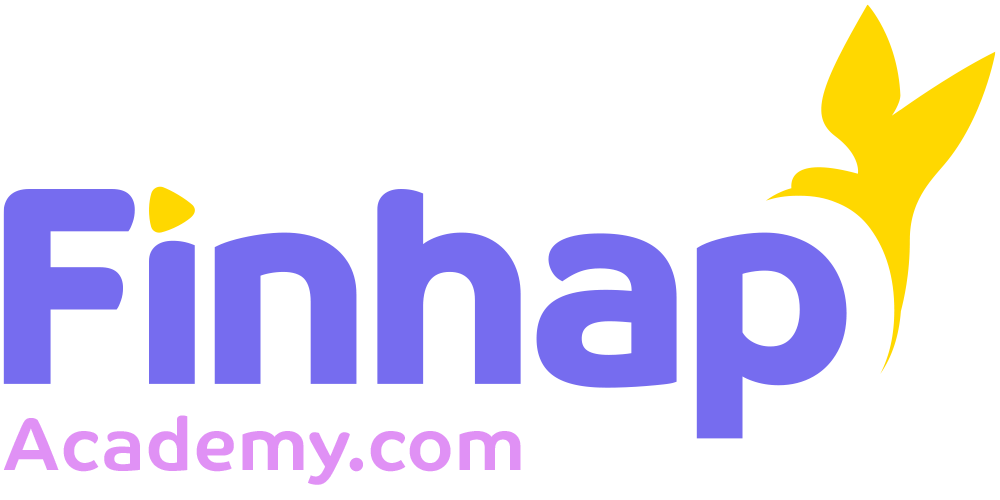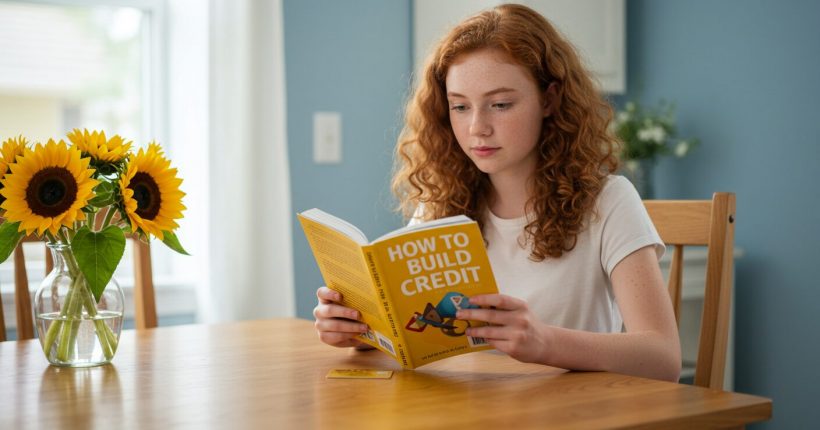

As a teen, the term “financial literacy” may sound like something you don’t need to worry about until you’re older. After all, you might think money problems are for adults juggling bills, mortgages, and retirement plans. But here’s the truth: the sooner you understand how money works, the more freedom and opportunities you’ll create for yourself later. If you’re looking for money lessons for teens, you’ve come to the right place.
Financial literacy isn’t about being a millionaire—it’s about having confidence and control over your money. And while retirement may feel light years away, the money habits you start practicing in high school or college will shape your future in powerful ways.
Here are 11 smart money lessons every teen should know—practical tips that can help you avoid mistakes, build wealth early, and prepare for real-world financial independence.
1. Needs vs. Wants: Spend Wisely

One of the most important money lessons is learning the difference between needs and wants.
- Needs: Essentials like food, school supplies, transportation, and basic clothing.
- Wants: Extras like new sneakers, a gaming console, or the latest iPhone.
When you’re tempted to buy something, pause and ask: “Do I need this right now, or do I just want it?” This simple question can save you hundreds (or thousands) of dollars over time.
Example: Imagine you get $50 for your birthday. If you spend it on snacks, trendy T-shirts, or game credits, the money is gone instantly. But if you put that $50 into a savings account, it could grow into much more over time—and you’ll still have options for fun later.
Pro Tip: Try a “24-hour rule” for non-essential purchases. If you want to buy something that isn’t a need, wait 24 hours before spending. Many times, the desire fades, and you’ll be glad you didn’t waste the money.
2. Live Below Your Means: Spend Less Than You Earn
One of the simplest—but most powerful—rules of money is this: spend less than you earn.
It doesn’t matter if you’re making $20 a week babysitting or $200 at a part-time job. If you consistently spend all of it (or more), you’ll always be stressed about money. But if you live slightly below your means, you’ll create room to save and invest.
Even saving as little as $20 a month can add up big over time. Thanks to compound interest, your small savings can grow into thousands of dollars by the time you’re an adult.
Example: If you save $20 a month from age 15 to age 25 and invest it in a fund that earns 7% per year, you’ll have nearly $3,500 saved. Keep saving through adulthood, and that small habit can snowball into six figures.
Pro Tip: Track your spending for one week. Write down every single dollar you spend. At the end of the week, review and ask: “What could I have skipped?” You’ll often find small leaks that can be plugged to boost your savings.
3. Set Savings Goals: Short-Term and Long-Term

Saving is easier when you have clear goals. Instead of just saying, “I want to save money,” decide exactly what you’re saving for and by when.
- Short-term goals: A concert ticket, new backpack, or bicycle.
- Long-term goals: College expenses, a car, or even your first apartment.
When you set a savings goal, track it visually—whether in a money app, a spreadsheet, or even a jar labeled with your goal. Watching your progress grow creates motivation.
Example: Say you want a $300 bike. If you save $25 a week from a part-time job, you’ll reach your goal in just 12 weeks. Once you achieve it, you’ll not only enjoy your bike but also feel proud of your discipline.
Pro Tip: Split your money into three categories: Save, Spend, and Give. For example, if you get $30, you could save $15, spend $10, and give $5. This keeps your money balanced and teaches responsibility.
4. Start Investing Early: Let Your Money Grow
Most teens think investing is something only adults with “real” jobs can do. But that’s not true—you can start small, even with a few dollars.
Investing is like planting a tree: the earlier you plant it, the bigger and stronger it grows over time. That’s the magic of compound growth.
Example: If you invest just $10 a week starting at age 16, by the time you’re 40, you could have over $50,000 (assuming a 7% annual return). Wait until you’re 26 to start, and you’d only have about $25,000.
Pro Tip: Research index funds or ETFs. These are beginner-friendly investments that let you buy a little piece of many companies at once. They’re safer than gambling on single stocks and can grow steadily over time.
Even if you can’t invest right now, just learning the basics will give you a huge head start when you’re ready.
5. Build Skills to Boost Your Income

Money lessons aren’t just about saving—they’re also about earning more. As a teen, your most valuable asset isn’t your money; it’s your time and skills.
Learning new skills like writing, coding, design, or video editing can open doors to freelancing or part-time work that pays much more than minimum wage jobs.
Example: A teen who learns basic graphic design could charge $20–$50 per logo online. Create 10 logos in a month, and you’ve just earned several hundred dollars—more than a typical after-school shift.
And here’s the best part: once you have a skill, no one can take it away from you. Unlike a gadget that loses value, skills keep paying off for years.
Pro Tip: Explore free online platforms like YouTube tutorials, Coursera, or Codecademy. Pick one skill that excites you and commit to practicing it for 30 minutes a day. By the end of a year, you’ll be shocked at how valuable you’ve become.
6. Multiple Streams of Income: Don’t Rely on One
One paycheck is good. Multiple paychecks are better.
If your only income is a single part-time job, you’re vulnerable—if your boss cuts your hours, you’re stuck. But if you add a side hustle (like tutoring, pet sitting, or selling crafts online), you create multiple streams of income.
This doesn’t just grow your money; it teaches resilience. You’ll learn that your financial future doesn’t depend on just one source.
Example: Imagine you earn $150 a month from babysitting and another $100 from selling custom T-shirts online. That’s $250 total—if one income slows down, you still have the other.
Pro Tip: Don’t spread yourself too thin. Start with your main income, then add one simple side hustle. As you gain experience, you can add more.
7. Gross Pay vs. Net Pay: Know the Difference
One of the biggest surprises for teens when they land their first job is realizing that their paycheck is smaller than expected. Why? Taxes.
- Gross pay is the total amount you earn before taxes and deductions.
- Net pay is what you actually take home after taxes, Social Security, Medicare, and other deductions.
Example: If your job pays $12 an hour and you work 20 hours in a week, your gross pay is $240. But after taxes, your net pay might only be $200. That difference matters when budgeting.
Pro Tip: Use online paycheck calculators to estimate your net pay. This way, you’ll know exactly how much money you’ll really have to work with—and avoid overspending based on gross pay.
Understanding this difference early prepares you for adulthood, when tax deductions, healthcare, and retirement contributions become an even bigger part of your paycheck. If you want to get a detailed description on gross and net pay, check out our article, “Gross Pay vs. Net Pay Explained for Teens: What Your Paycheck Really Means”.
8. Good Debt vs. Bad Debt: Borrow Smartly
Not all debt is evil—but not all debt is good, either. Knowing the difference helps you make smart choices. We went in-depth on good vs. bad debt in our article, “Good Debt vs. Bad Debt: Borrow Smartly”, but here’s a quick snapshot:
- Good debt: Debt that helps you build wealth or invest in your future.
- Examples: Student loans (if kept reasonable), a mortgage, or a business loan.
- Examples: Student loans (if kept reasonable), a mortgage, or a business loan.
- Bad debt: Debt that drains your money without building long-term value.
- Examples: High-interest credit card balances, payday loans, or borrowing for luxury items you can’t afford.
- Examples: High-interest credit card balances, payday loans, or borrowing for luxury items you can’t afford.
Example: Taking out a small student loan to go to college can pay off if it leads to a higher-paying career. But charging $2,000 on a credit card for clothes or a spring break trip can take years to pay off—and cost far more than the original purchase.
Pro Tip: Before borrowing, ask yourself: “Will this debt help me make money in the future, or will it only take money away from me?” If the answer is the second, skip it.
9. Build Credit Responsibly: Start Now

Your credit score is like a financial report card. It tells lenders, landlords, and even some employers how trustworthy you are with money. The earlier you start building good credit, the better opportunities you’ll have later.
How teens can build credit safely:
- Become an authorized user on a parent’s credit card (with their guidance).
- Get a student credit card or a store card with a low limit.
- Use it for small purchases (like gas or groceries) once a month.
- Pay it off in full every single month.
This way, you prove you can handle credit without ever paying interest.
Example: Let’s say you use your card for $50 in gas and pay it off right away. Over time, your positive payment history helps your credit score rise, making it easier to get an apartment, buy a car, or qualify for low-interest loans in the future.
Pro Tip: Never carry a balance “just to build credit.” That’s a myth. Paying in full every month is what builds strong credit.
For a more in-depth approach on the ways to build credit as a young adult, check out our article titled, “Build Credit Responsibly as a Teen: Start Now”.
10. Get Creative: Ways to Grow Your Money
Money doesn’t just come from jobs—it can also come from creativity. Teens today have more opportunities than ever to start small ventures.
- Sell handmade crafts or art online.
- Start a tutoring service for younger students.
- Flip thrifted items on eBay or Depop.
- Try digital ventures like YouTube, podcasting, or writing online.
Even if your project doesn’t earn much at first, the experience teaches you entrepreneurship, marketing, and money management—all valuable skills for the future.
Example: A teen who loves baking could sell cookies to neighbors or at school events. Even if they only earn $50, they’ve learned how to set prices, manage costs, and satisfy customers.
Pro Tip: Think of money-making ideas as experiments. Some will work, some won’t—but you’ll always learn something.
11. Keep Learning: Financial Literacy is a Superpower

The last lesson is the most important: never stop learning about money.
Financial literacy isn’t a one-time class; it’s a lifelong skill. The world of money keeps changing—new apps, new investing tools, new opportunities. Teens who stay curious and keep learning will always be ahead.
Ways to keep learning:
- Read personal finance books (like The Richest Man in Babylon or I Will Teach You to Be Rich).
- Follow finance blogs, podcasts, and YouTube channels.
- Try free money apps that teach budgeting or investing.
- Join challenges like saving $5 a week or tracking all expenses for a month.
Example: One teen might learn about investing from TikTok and decide to open a beginner-friendly brokerage account with $50. Another might use a budgeting app and discover they’re spending $40 a month on fast food—and choose to redirect that money into savings. Both examples show how small steps in financial learning lead to powerful results.
Pro Tip: Treat financial literacy like a video game. The more “levels” you unlock—budgeting, saving, investing—the stronger your money “character” becomes.
And check out our article, “Keep Learning: Financial Literacy is a Superpower” for a more detailed strategy on your personal financial education.
Why Financial Literacy Matters for Teens
Being smart with money isn’t just about numbers—it’s about freedom. When you control your money, you control your choices. You can say yes to opportunities and no to debt. You can afford to travel, go to school, or start a business.
Imagine this:
- Teen A spends every dollar on fast food and clothes, never saves, and ignores credit. By age 25, they’re in debt and stressed.
- Teen B learns to budget, saves $50 a month, and builds good credit. By age 25, they have savings, strong credit, and options.
Both started in the same place, but their choices led them down very different paths.
Financial literacy is the difference between being controlled by money and using money as a tool to build the life you want.
Bringing It All Together: How Teens Can Apply These Lessons
It’s one thing to read money tips—it’s another to put them into practice. The good news is, you don’t need a full-time job or tons of money to start. Even small actions make a difference.
Here’s how you can apply the 11 lessons step by step:
- Track Your Spending for One Week
Write down everything you buy, from snacks to subscriptions. At the end of the week, highlight your needs in one color and your wants in another. You’ll be surprised at how much of your money is going to “wants.” - Set a Simple Savings Goal
Pick something small and reachable, like saving $50 for a concert ticket. Open a jar or use a banking app and watch your progress. Once you hit your goal, set a new one. - Experiment with a Side Hustle
Babysitting, selling used clothes online, tutoring—pick one and try it for a month. Even if you only make $30, that’s $30 you didn’t have before. - Learn About Investing with Play Money
Use free stock market simulator apps (like Investopedia’s simulator or Stock Trainer) to “practice” investing with fake money. You’ll learn how the market works without any risk. - Start Building Credit Early
If possible, talk to your parents about becoming an authorized user on their card or applying for a student card. Use it responsibly to build your financial future.
Common Mistakes Teens Should Avoid

Even with the best intentions, it’s easy to fall into money traps. Here are some pitfalls to watch out for:
- Impulse Spending: Buying something just because it’s trendy or because friends have it.
- Ignoring Savings: Thinking “I’ll save later” usually means you never start.
- Relying on Debt: Using credit cards for wants instead of needs creates unnecessary stress.
- Not Asking Questions: Feeling embarrassed about money leads to mistakes. Remember, everyone starts somewhere.
Avoiding these mistakes now will save you years of stress down the road.
Parents’ Role in Teen Financial Literacy
Parents play a big part in how teens view money. If you’re a parent reading this, here’s how you can help:
- Be Transparent: Share how budgeting works in your household. Let teens see real numbers for things like groceries or electricity.
- Give Controlled Freedom: Allow teens to manage a small allowance or earnings, but with guidance.
- Model Good Behavior: Kids copy what they see. If you save, invest, and avoid debt, they’re more likely to do the same.
- Encourage Questions: Make money a safe, open topic at home.
This partnership makes learning about money less intimidating and more practical.
The Big Picture: Money as a Tool for Freedom
At the end of the day, money is not about greed or materialism—it’s about choices.
- Saving gives you options when emergencies come up.
- Investing gives you freedom later in life.
- Budgeting gives you control instead of stress.
- Learning gives you confidence.
As a teen, you’re at the perfect stage to start. Small habits today compound into massive results tomorrow.
Remember this: It’s easier to build good money habits early than to fix bad ones later.
Final Thoughts
These 11 money lessons aren’t just about dollars—they’re about building the life you want. By learning the difference between needs and wants, saving consistently, exploring investments, and staying curious, you’ll create a strong foundation for financial independence.
Whether you’re earning allowance money, working a part-time job, or just starting to think about the future, these lessons put you ahead of the game.
The earlier you start, the more powerful your money becomes.
So don’t wait—start today. Your future self will thank you.
For a full-length course on the basics of finance, FINHAP has you covered. We offer a detailed, easy to learn course for teens and young adults.
Click here to learn more.
You May Also Like
-
Sep 30, 2025
-
Sep 30, 2025
-
Sep 30, 2025
-
Sep 30, 2025
Sign up to receive our latest updates
Get in touch
Address
180 Robinson Road, #14-04 Singapore Business Federation Center Singapore (068914)




